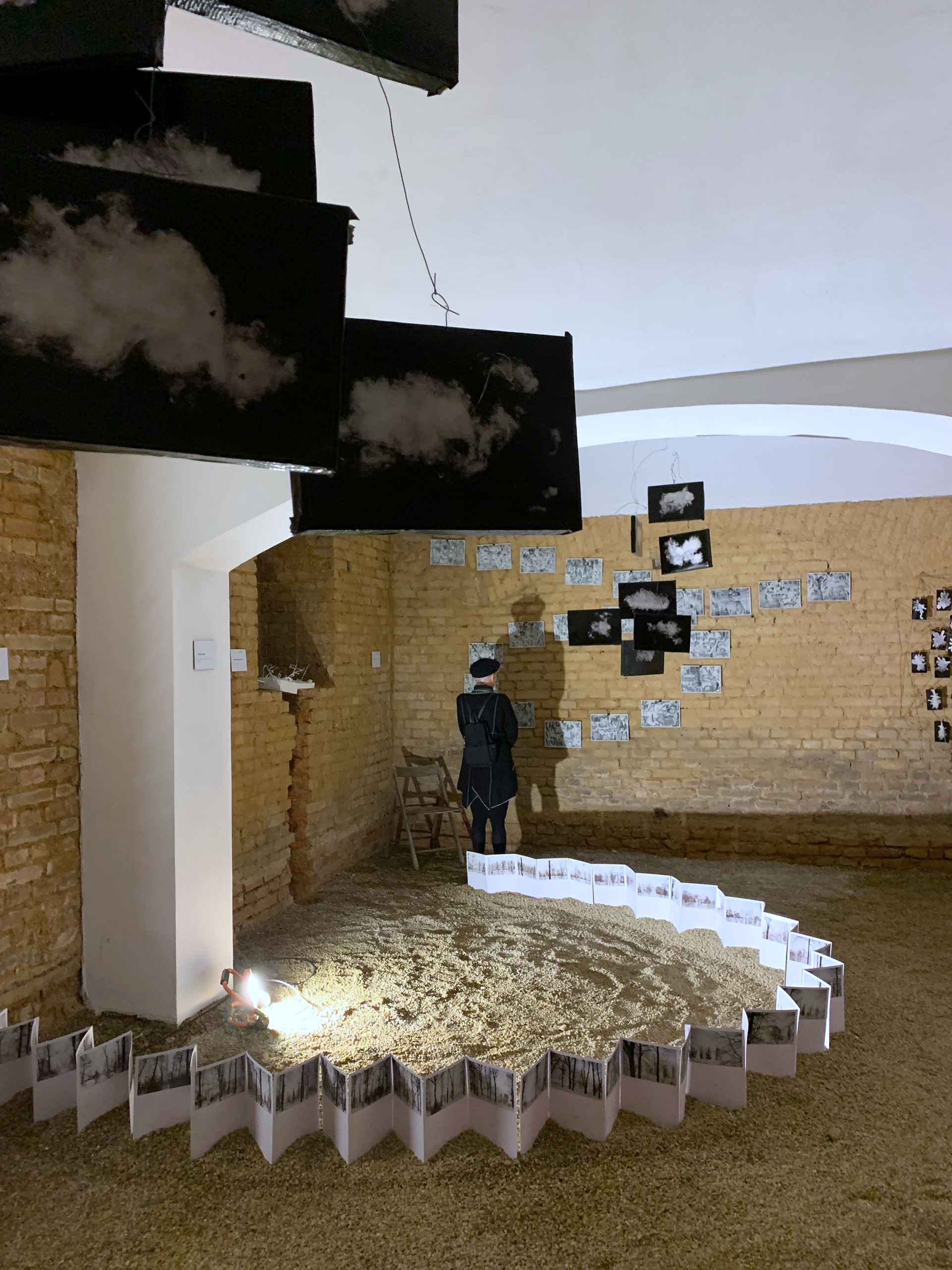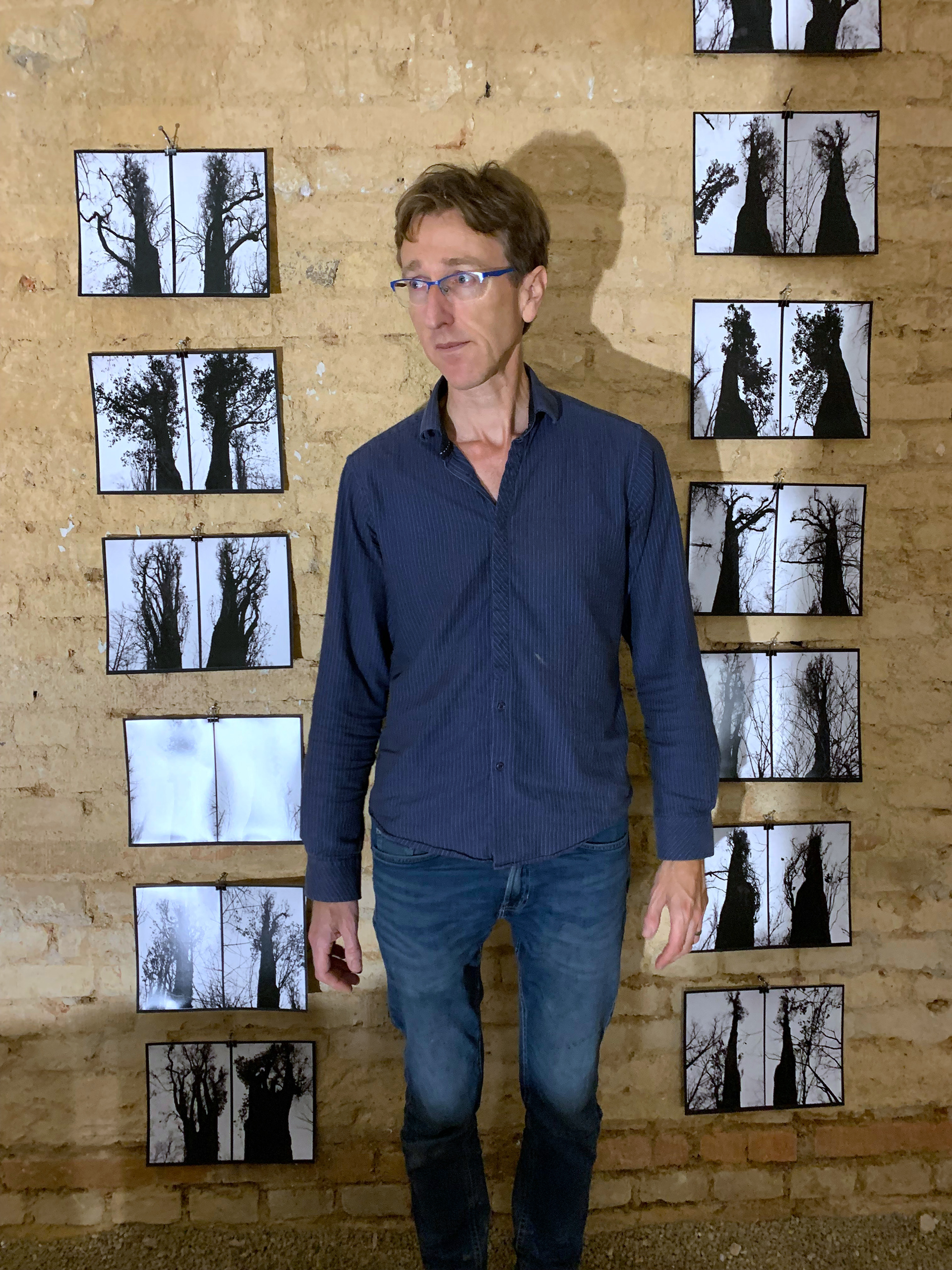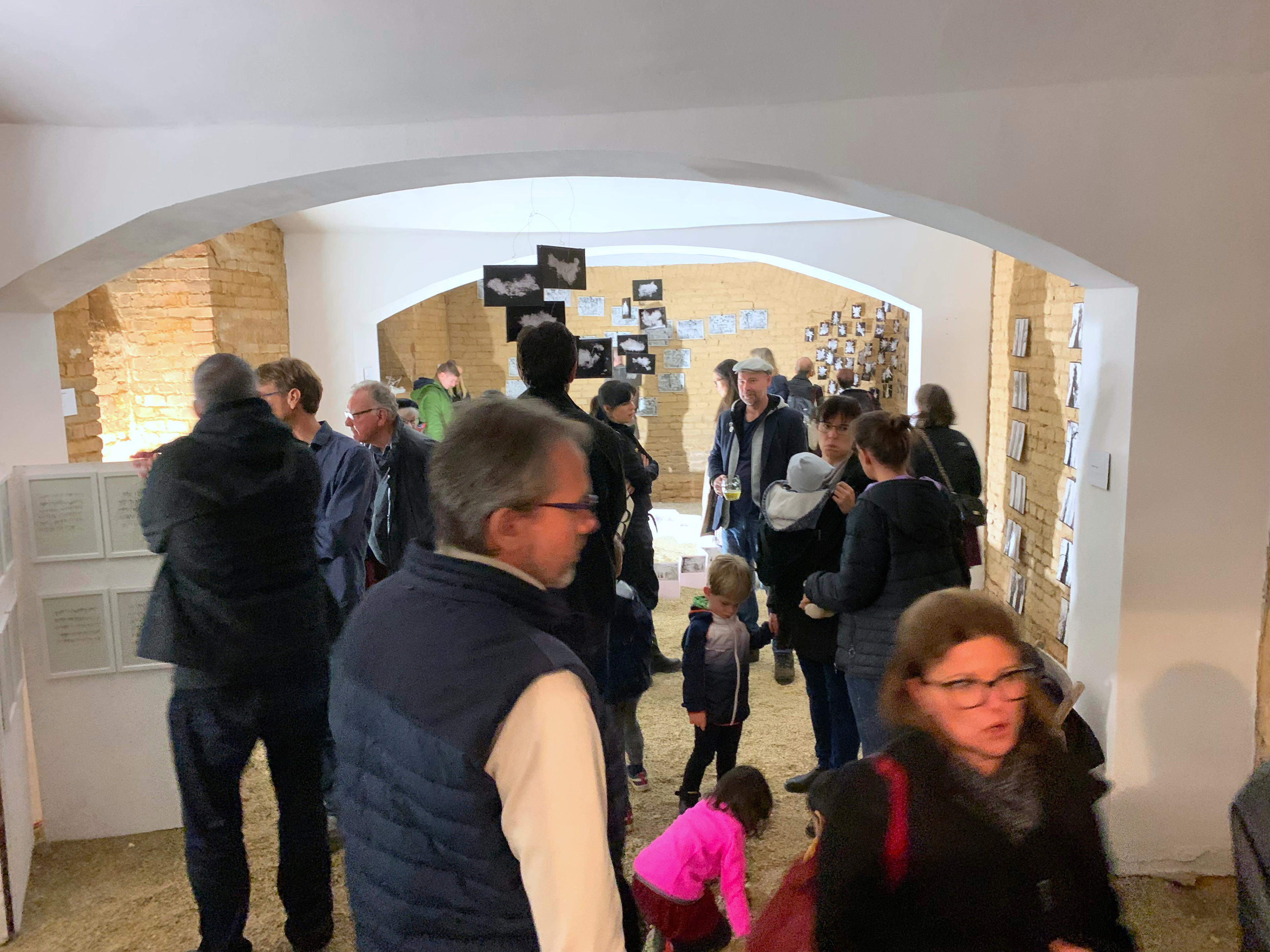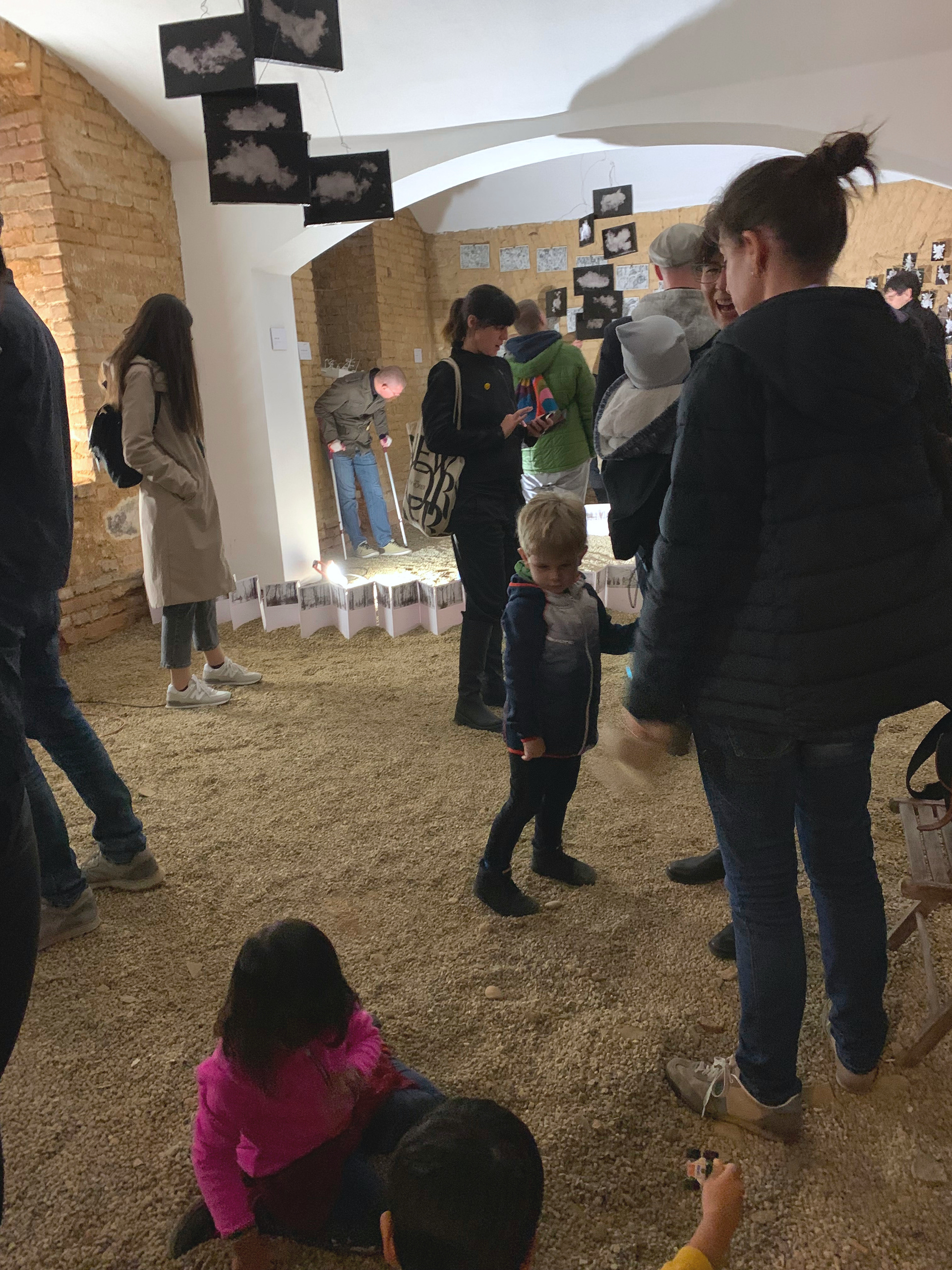id est cùm in speculo est imago arboris; speculum non cognoscit arborem; cum autem in oculo viuentis est imago, oculis cognoscit arborem -- Janus Cæcilius Frey, 1645
Arboreal Images just before opening. 2.11.2022
Aboreal Images showed just one evening, that of All Souls, for an hour or so in the underground space of Sklaad, Prague 7. Each piece, finding its place in corner or niche, on wall or ground, is the culmination of a period of gestation in which real is transformed into image: metonyms of trees metamorphose into metaphors. The process is not unlike that of the larva-pupa-imago development of a moth, which feature in the web of images of Robinia pseudoacacia, a network of close-ups of traces left in young black locust tree leaves by digitate leafminer larvae (parectopa robiniella). Beneath the pair of superimposed square frames of Tilia tomentosa 'Petiolaris' the pressed flowers of a weeping silver linden lie flattened on paper, while above dried flowers from the same tree, unpressed, lie above the glass of the second frame, in dialogue with their images beneath. The plumes of black poplar seeds that float through the air in June transpose to clouds hanging in mobiles in Populus nigra, and may be subject to a further transposition to camel, weasel, whale... (The various markings made by leafminers in Robinia pseudoacacia also lend themselves to imaginative leaps and psychological projections, akin to the ink blots of Rorschach tests.) The chestnut tree elements populating Aesculus hippocastanum become figures in a drama. It was the articulation of the branching of the conker-bearing stems that first prompted me to collect them. A similar impulse lies behind Tilia, in which a sample of fifty or so cymes from eight species of linden tree are individually transcribed as a carbon print and a code recording their branching structure juxtaposed in ink. I revisited the same tree over successive years, so each species has two drawings/records (the drawings were made in 2022, partially explaining the difference in appearance: those collected in 2021 had curled and stiffened in drying). Each selection was random to an extent, but not systematically so: the images record an excursion into an aleatory past. The drawings on torn pieces of paper are only held by the glass pressing on them - gravity moved some pieces slightly and may yet work on them.
As well as image-making and the carrying across of metaphor, another formal theme of is that of spatial correspondence, in particular in the transposition of lines of movement in observation to the arrangement of images in the objects displayed. Betula pendula transcribes clockwise and anticlockwise circlings of a birch tree trunk as left to right and right to left. The loop of Fagus sylvatica transcribes spiralling first down and then up a beech trunk (the layering of time in beech tree bark, and its mapping of an imaginary land from the past, also features in Beech/Book from Looking to See); proximate images overlap in coverage (and one pair overlaps in the display, nearly coincident). The accordion-folded Railway Embankment features 49 photographs taken every twenty paces alongside a railway from the south, and 49 photographs taken every twenty paces from the north: the only 'compositional' choice was to have the level of the railway approximately the same in each picture, otherwise this was a mechanical process, the turn to face the railway embankment reversing the direction of view from inside a train carriage out on to the passing landscape. Adjacent photographs overlap in coverage but from a translated viewpoint; the folds in the card correspond to the intervals between stops to take photographs. Photographs mounted on opposite sides of the mounting card were taken from opposite sides of the railway. On the north side of this stretch of railway each of 36 English oaks (Quercus robur 'Fastigiata') receive a double portrait. Walking along from east to west, I took one photograph in the direction of travel from the base of the trunk (shifting up the lens to help bring the top of the tree down closer), and one photograph against the direction of travel, from the base of the opposite side of the trunk. Finally, in Populus alba, white poplar leaves pressed between glass panes are turned over by degrees to switch from dark recto to light verso, the motion of turning leaves flickering in the summer breeze thereby stopped.
Below: photos from the exhibition by Jarik Nešetřil.






